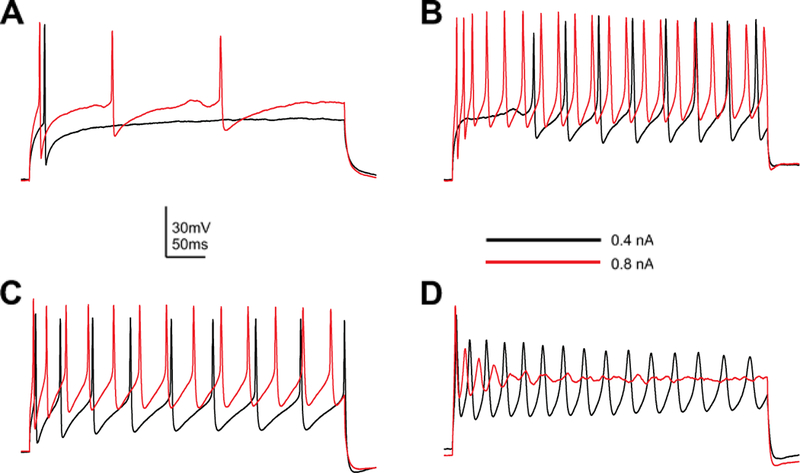Fig. 1.

Different electrophysiological profiles recorded from Drosophila MN5. Intracellular recordings were made in whole-cell patch configuration from MN5 in wild-type adult Drosophila. At least four different firing behaviors can be observed in response to a 500 ms square-pulse current injection of 0.4 nA (black traces) or 0.8 nA (red traces). (A) Low-amplitude current stimulation elicits a single action potential (black trace), while increased stimulation elicits repetitive spiking that adapts in frequency (red trace). (B) Repetitive firing is elicited by low-amplitude stimulation, but commences only after a delay (black trace). Increasing the current amplitude eliminates the delay and increases the firing frequency (red trace). (C) Repetitive firing without a significant delay is induced even by low-amplitude current injection (black trace), while increasing the amplitude increases the firing frequency (red trace). (D) Low-amplitude stimulation produces a large initial spike, followed by triangular-shaped spikes which diminish in amplitude and broaden as stimulation continues (black trace). Larger stimulation amplitudes induce dampening oscillations that end in depolarization block (red trace)
